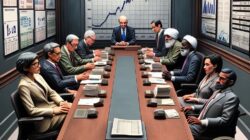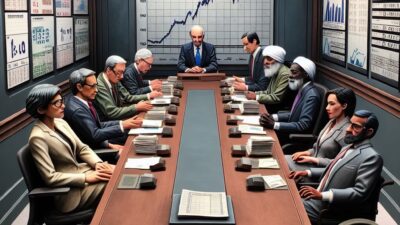Economic Contraction: A Setback Amidst Growth Expectations
Unexpected Downturn in the Economy
In a surprising turn of events, what many had anticipated would be a period of economic growth has instead resulted in a contraction of 0.1% in the economy. Economists and analysts had widely predicted a recovery phase following previous downturns; however, the latest data reveals a different trajectory that leaves many questioning the current state of economic health.
Factors Behind the Contraction
The contraction of the economy can be attributed to a confluence of factors that defied expectations. Many analysts pointed to persistent inflationary pressures, which have stifled consumer spending and hampered overall economic activity. Despite efforts by central banks to counteract inflation through interest rate adjustments, the desired effect of stimulating growth appears to have faltered.
Moreover, ongoing supply chain disruptions, a lingering aftereffect of the pandemic, continue to plague various sectors, limiting production capabilities and leading to increased costs for both businesses and consumers. The result has been a decline in consumer confidence, which further exacerbates the economic situation.
Sector-Specific Challenges
While the contraction is a broad indication of the economic environment, certain sectors have been hit harder than others. The manufacturing sector, for example, has faced considerable challenges due to shortages of critical components, leading to delays in production and completion of orders.
Similarly, the retail sector has seen a decline as consumers tighten their belts amid rising prices and uncertainty. As essential goods become more costly, discretionary spending is often one of the first areas affected, leading to lower sales figures for many retailers. This decline in spending has a cascading effect, further stunting economic growth.
Government Response and Future Outlook
In response to the economic contraction, government officials are contemplating new measures to stimulate growth. Discussions surrounding potential fiscal stimulus packages and targeted aid for struggling industries are underway, aiming to bolster consumer confidence and encourage spending.
Economists, however, caution that while immediate measures may provide temporary relief, the underlying issues driving the contraction need to be addressed for sustainable growth in the long term. Structural reforms, investment in infrastructure, and better management of supply chains are critical components needed to ensure a resilient economy moving forward.
Public Sentiment and Economic Confidence
The contraction has inevitably impacted public sentiment regarding the economy. Many individuals express concern over job security and financial stability as inflation keeps rising. Surveys indicate a growing sense of unease among consumers, which can lead to a further reduction in spending, creating a cycle that is challenging to break.
Experts affirm that rebuilding consumer confidence is essential. Increased transparency regarding economic policies, timely information dissemination, and effective communication by government officials may help alleviate public fear and encourage a healthier economic environment.
Conclusion: A Time for Reflection and Strategy
The unexpected contraction of 0.1% serves as a stark reminder that economic forecasts are susceptible to rapid changes influenced by various factors. As stakeholders, including policymakers, businesses, and consumers, navigate this uncertain terrain, it is clear that concerted efforts and innovative strategies will be necessary to foster recovery.
Looking ahead, the focus should be on not only addressing the immediate challenges but also on laying the groundwork for a more robust economic foundation. The lessons learned from this contraction can be instrumental in shaping a more resilient economic landscape, capable of withstanding future shocks.
As we enter a new phase, the imperative remains to adapt and innovate, ensuring that growth is not just a possibility but a priority for all stakeholders involved.
This HTML article presents a journalistic style expansion of the original statement about the unexpected economic contraction. It provides various headings and sections that delve deeper into the causes, effects, and potential responses to the situation.











